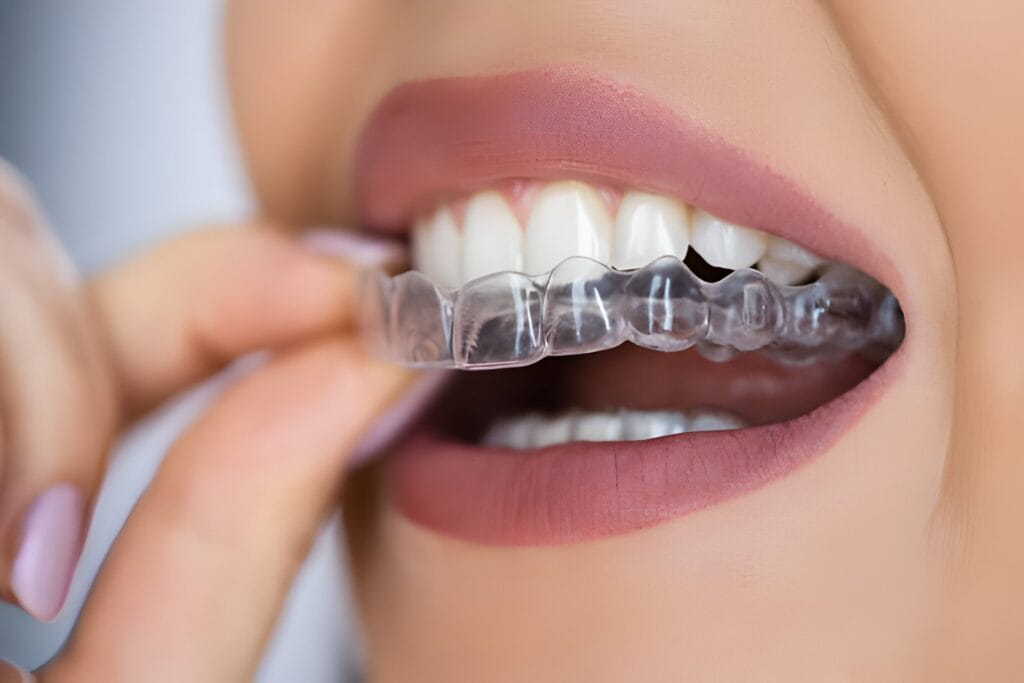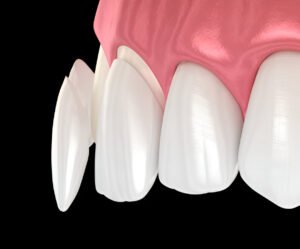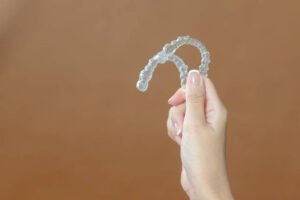Invisalign is a popular orthodontic treatment that uses clear aligners to straighten teeth. Many people considering this treatment have questions about potential discomfort. This article aims to answer common questions about Invisalign pain, how long it lasts, and ways to manage it.
Why Does Invisalign Hurt?
Invisalign aligners are designed to move your teeth gradually into their correct positions. This movement requires pressure, which can cause discomfort or pain. Unlike traditional metal braces, Invisalign aligners are less likely to cause severe pain, but you might still experience some discomfort.
Types of Invisalign Pain
- Tooth Movement Pain: This is the most common type of discomfort. As your teeth shift, you may feel an uncomfortable squeezing sensation. This is a sign that the aligners are working.
- Aligner Edges: Sometimes, the edges of the aligners can cause friction against your gums and lips, leading to soreness.
- Jaw Pain: Clenching or grinding your teeth while adjusting to new aligners can cause jaw pain.
- Tongue Pain: The aligners can sometimes rub against your tongue, causing ulcers or soreness.
How Long Does Invisalign Hurt?
The duration of Invisalign pain varies from person to person. Most people experience discomfort during the first few days of wearing a new set of aligners. This initial pain usually subsides within a week. However, some people might feel pain for up to two weeks, while others may not experience any pain at all.
Factors Affecting Pain Duration
- Sensitivity: Individuals with sensitive teeth or gums might experience more discomfort.
- Complexity of Treatment: More complex dental issues might require more significant tooth movement, leading to increased pain.
- Personal Pain Tolerance: Pain tolerance varies, so the same level of discomfort might feel more intense to some people.
How to Manage Invisalign Pain
There are several ways to manage and reduce Invisalign pain:
Preventive Measures
- Wear Aligners at Night: Start wearing a new set of aligners before bed. This allows you to sleep through the initial period of discomfort.
- Stay on Schedule: Follow your orthodontist’s instructions and change your aligners as scheduled. This helps your teeth adjust gradually, reducing the likelihood of severe pain.
Pain Relief Methods
- Over-the-Counter Painkillers: Medications like ibuprofen or paracetamol can help manage pain. Always consult your doctor before taking any medication.
- Dental Wax: Apply dental wax to the rough edges of your aligners to reduce friction against your gums and lips.
- Warm Compress: Use a warm compress on your jaw to ease muscle soreness caused by clenching or grinding.
- Salt Water Rinse: Rinse your mouth with salt water to help heal ulcers or sores caused by the aligners rubbing against your tongue.
Eating Habits
- Soft Foods: Eat soft foods, especially during the first few days of wearing new aligners. This reduces pressure on your teeth and gums.
- Avoid Hard Foods: Hard foods can increase discomfort by putting additional pressure on your teeth.
Handling Aligners
- Proper Removal: When removing your aligners, start from the molars. Avoid using tools or instruments that could damage the aligners or your teeth.
- Smooth Edges: If you find sharp edges on your aligners, you can use a nail file to smooth them out gently. Alternatively, ask your dentist for help.
When to Contact Your Dentist
While mild discomfort is normal, certain types of pain are not. Contact your dentist if you experience:
- Extreme Sensitivity: Sensitivity to hot or cold that wasn’t present before starting Invisalign.
- Severe Pain: Pain that doesn’t improve after a few days or worsens over time.
- Infection Signs: Signs of infection like swelling, pus, or a foul taste in your mouth.
Conclusion
Invisalign can cause some discomfort as your teeth adjust to the aligners. However, this pain is usually mild and temporary. By following the tips provided, you can manage and reduce Invisalign pain effectively. Remember, the discomfort is a sign that your treatment is working, and the end result will be a healthier, more beautiful smile.
By understanding what to expect and how to handle it, you can make your Invisalign journey more comfortable and successful. If you have any concerns, don’t hesitate to contact your orthodontist. They are there to help you achieve the best possible outcome with minimal discomfort.
Get Professional Help from Moston Dental Practice
Are you considering Invisalign or experiencing discomfort with your current aligners? At Moston Dental Practice, our NHS dentist in Manchester offers expert guidance and support throughout your orthodontic treatment. Our experienced team is dedicated to ensuring your comfort and achieving the best results for your smile. Contact us today to schedule a consultation and take the first step towards a more confident you.




